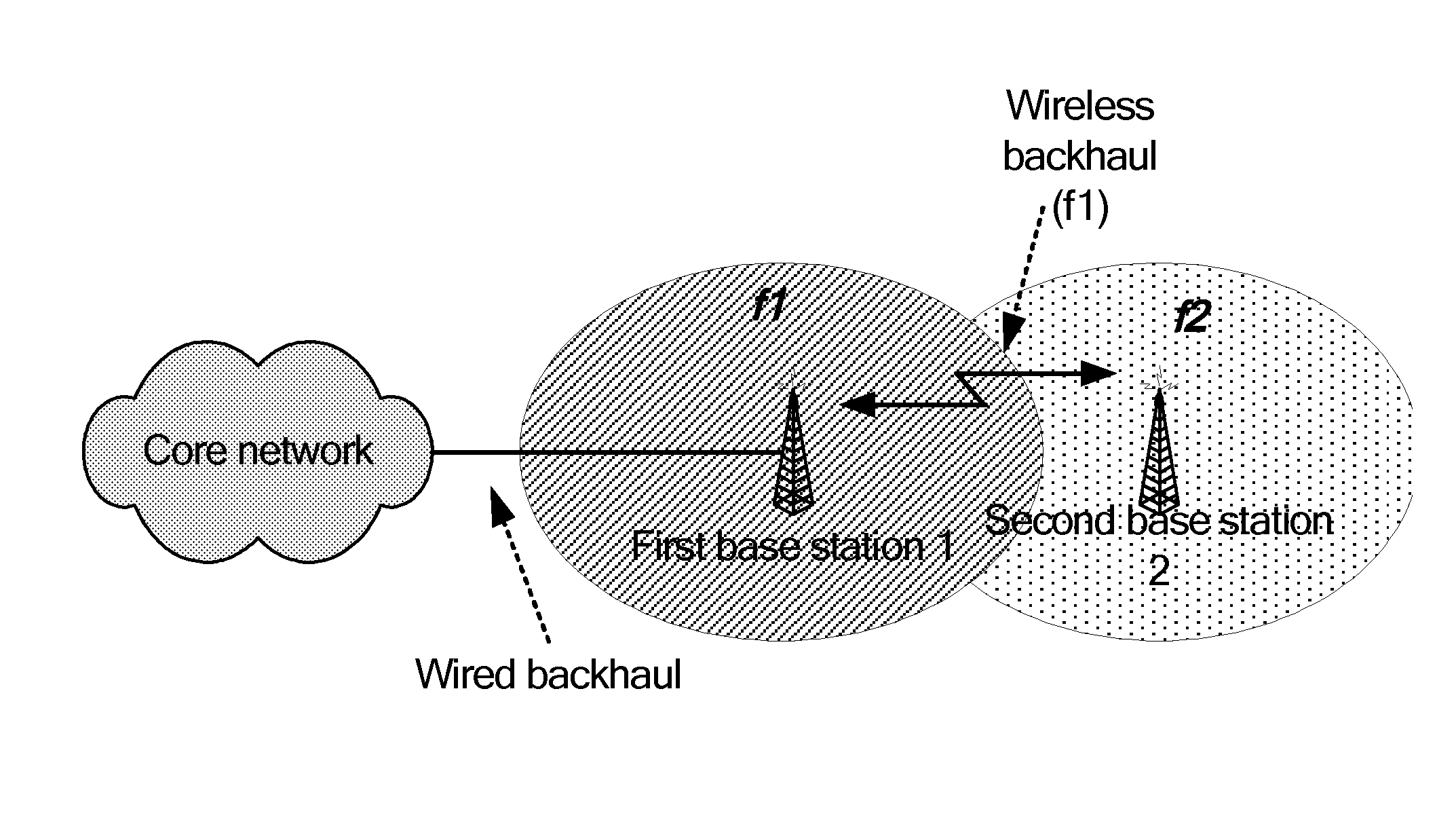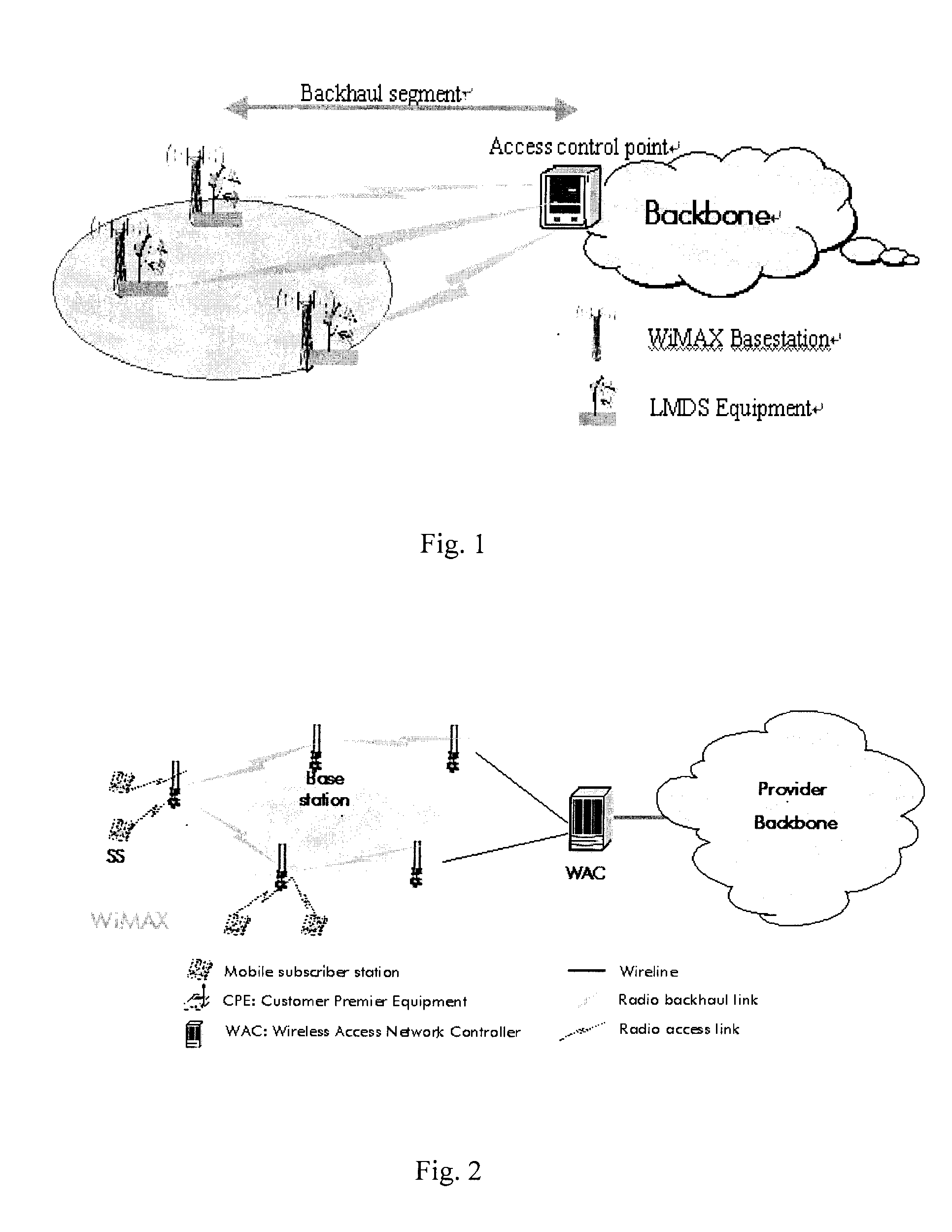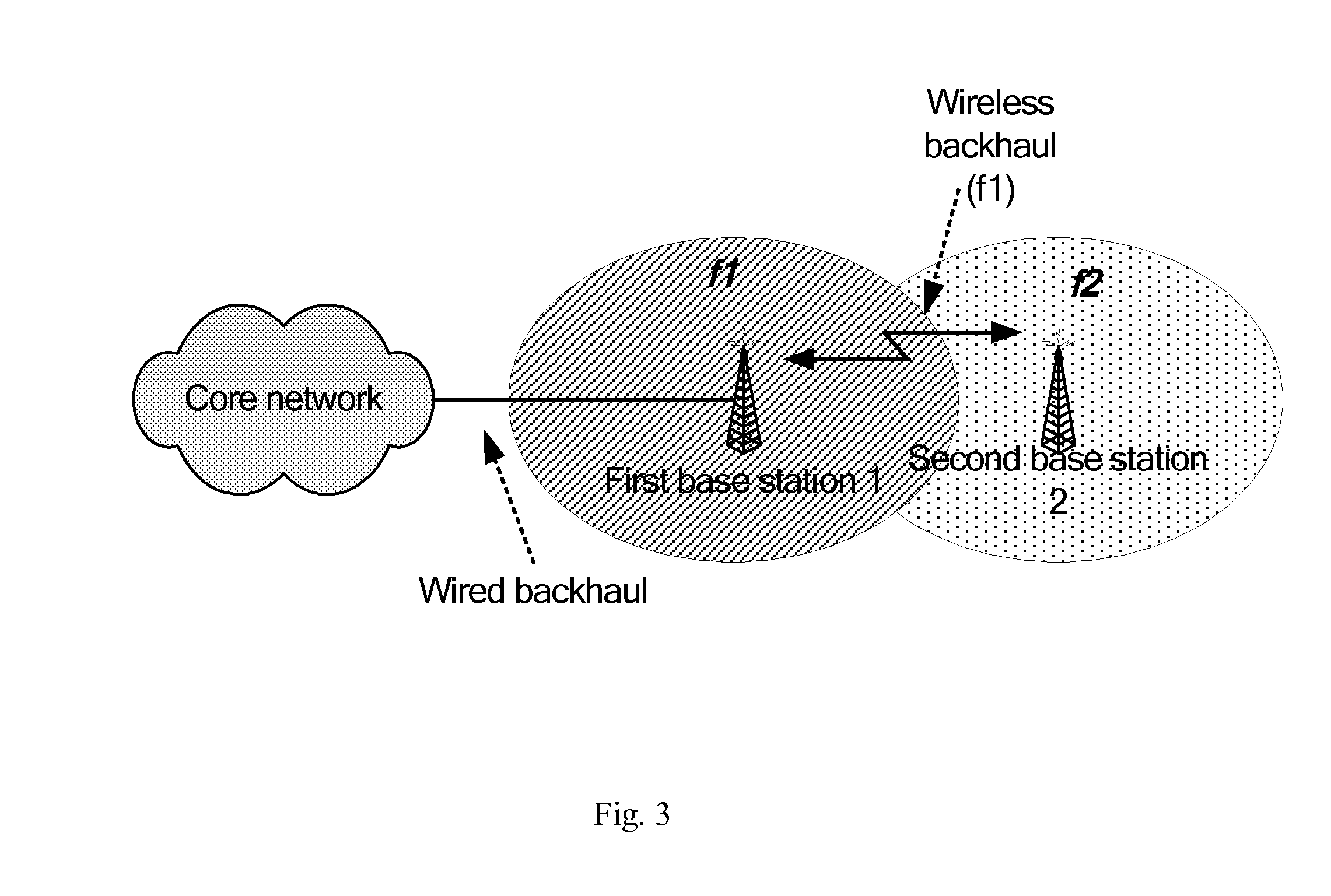Self-backhaul method and apparatus in wireless communication networks
a wireless communication network and self-backhaul technology, applied in the field of wireless communication networks, can solve the problems of low network capacity demand, low initial subscribers, and low network construction cost, and achieve the effect of significantly improving the ability of wireless return transmission and reducing investment and operation costs
- Summary
- Abstract
- Description
- Claims
- Application Information
AI Technical Summary
Benefits of technology
Problems solved by technology
Method used
Image
Examples
Embodiment Construction
[0031] According to an embodiment of the present invention, a complete frame, such as a complete IEEE 802.16 frame, of a base station in a wireless communication network can be divided into two parts. Part of the timeslots is used for the wireless backhaul functionality, and the other part is still used for the ordinary user access functionality (e.g. the WiMAX user access functionality). Two base stations transferring backhaul traffic asynchronously perform the receiving and transmitting functionality in time slices corresponding to receiving and transmitting timeslots of the master and slave base stations. In a backhaul timeslot, one base station is in a transmitting state while the other one is in a receiving state. In a user access timeslot, the two base stations perform reception and transmission at the same time. The mater and slaver base stations communicate with their respective subscriber stations. Base stations within the wireless communication networks are classified as m...
PUM
 Login to View More
Login to View More Abstract
Description
Claims
Application Information
 Login to View More
Login to View More - R&D
- Intellectual Property
- Life Sciences
- Materials
- Tech Scout
- Unparalleled Data Quality
- Higher Quality Content
- 60% Fewer Hallucinations
Browse by: Latest US Patents, China's latest patents, Technical Efficacy Thesaurus, Application Domain, Technology Topic, Popular Technical Reports.
© 2025 PatSnap. All rights reserved.Legal|Privacy policy|Modern Slavery Act Transparency Statement|Sitemap|About US| Contact US: help@patsnap.com



